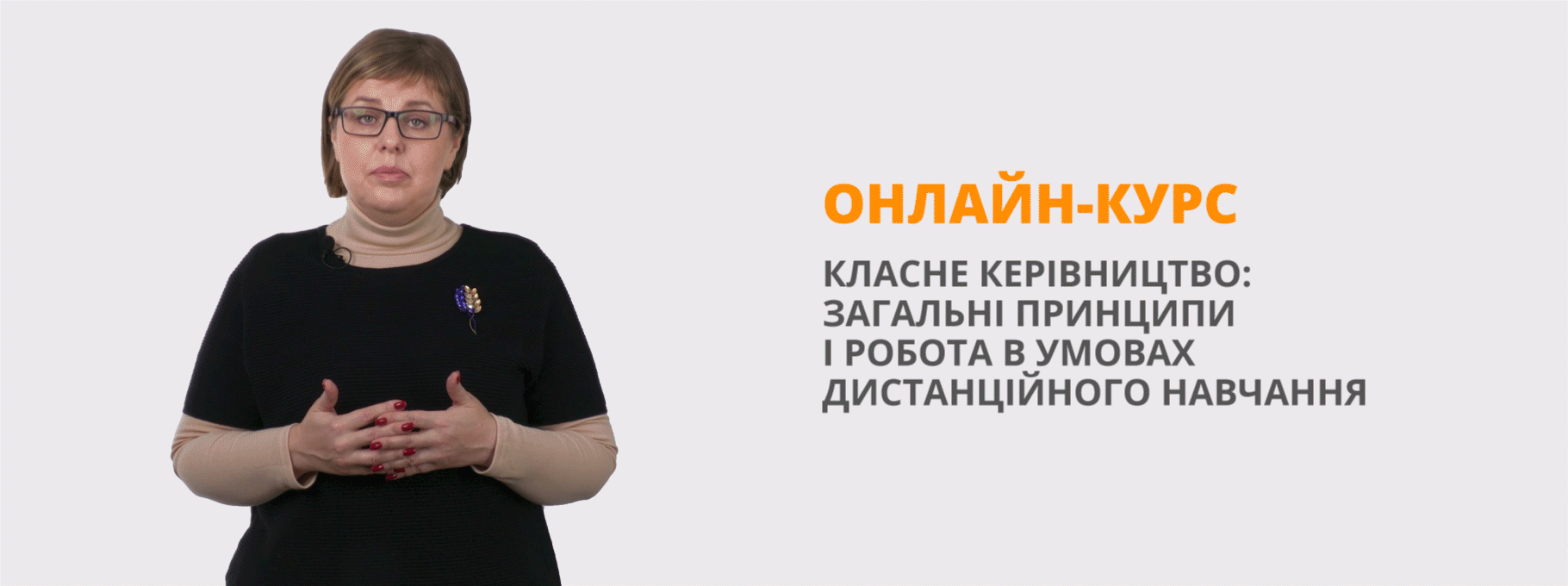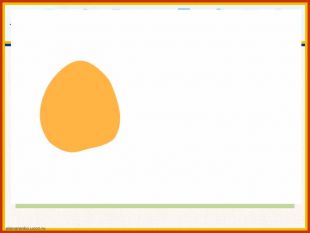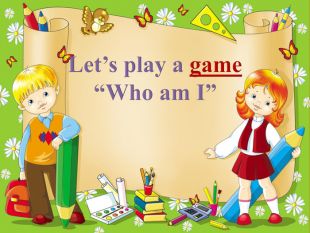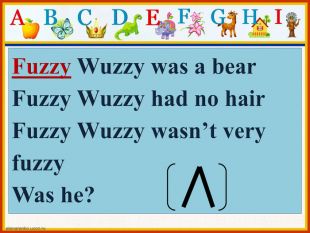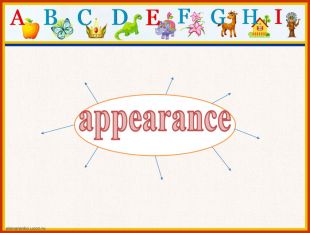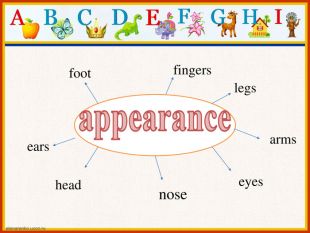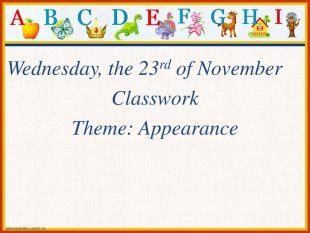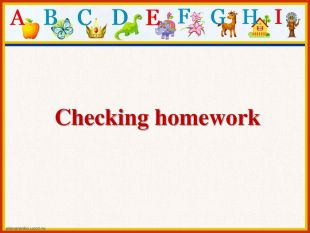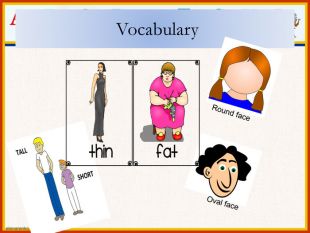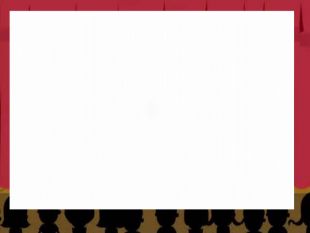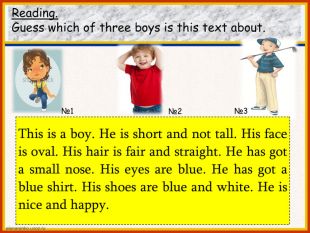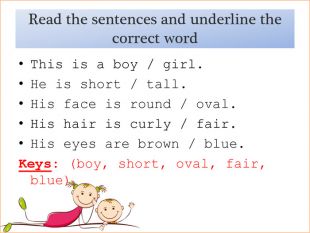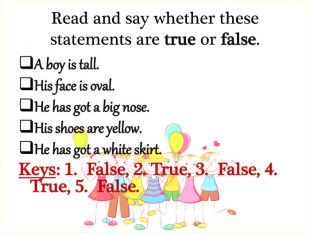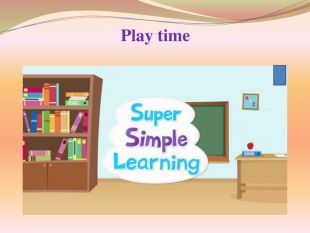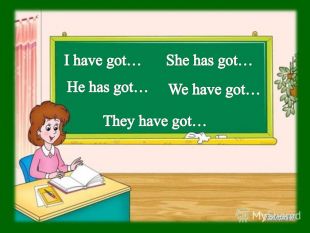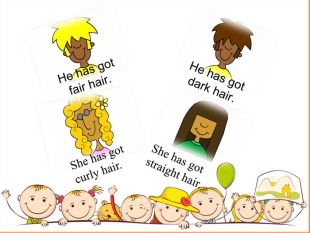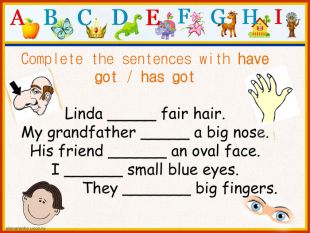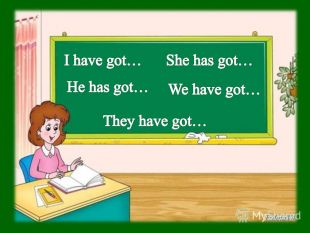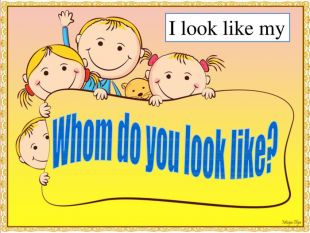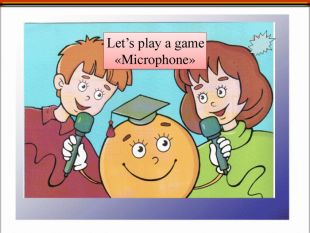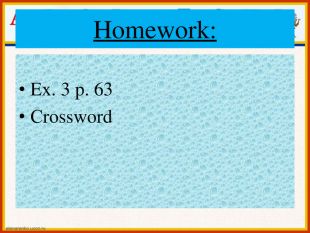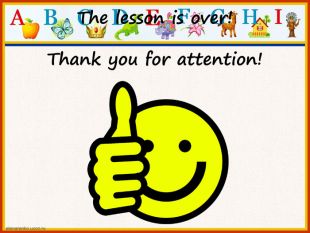Урок на тему "Зовнішність"
Тема: Зовнішність (Appearance).
Мета: Закріпити лексику, пов'язану з описом зовнішності людини (nose, lips, mouth, chin, head, hair, eyes, ears, cheeks, brows, face); формувати навички діалогічного мовлення, використовуючи запитання Whom do you look like?; розвивати комунікативні вміння, вміння читати текст з метою отримання певної інформації, вміння працювати в групах, розвивати пам'ять, спостережливість; виховувати уважність, чуйність у стосунках з товаришами, інтерес до навчання.
Обладнання: картки, мікрофон, презентація,кросворди,іграшки.
Тип уроку: комбінований.
Хід уроку
І. Підготовка до сприйняття іншомовного матеріалу.
1. Привітання. уведення в іншомовну атмосферу.
- Good morning, children!
Пісня “This is me"
2. Мовленнєва розминка.
Фонетична зарядка.
Tongue twister
Fuzzy Wuzzy was a bear
Fuzzy Wuzzy had no hair
Fuzzy Wuzzy wasn't very fuzzy
Was he?
Який звук ви найчастіше чули у скоромовці?
ʌ
ІІ. Основна частина уроку. .
1. Повідомлення теми та мети уроку.
- Children, what do you associated with the word “appearance"? Go to the blackboard and write these words.
Введення теми уроку за допомогою методу “Асоціативний кущ".
(На дошці написане слово “appearance". Діти підходять і пишуть навколо нього слово типу: ears, mouth, cheeks, nose…)
ears chin cheeks
mouth nose
lips head
- The subject of our lesson is “Appearance". We shall speak about our appearance, the appearance of our parents, friends. And we shall learn how to say whom do we look like.
- Сьогодні на уроці ми будемо продовжувати навчатися розповідати про зовнішність людини, а також навчимося англійською мовою говорити на кого ми схожі.
- But at first let's check up your home task..
2Контроль домашнього завдання.
-Your home task was to complete the text about your parents and make little projects about your parents. Let's check it.
(Діти читають розповіді про своїх батьків, в яких вони вставляли пропущені слова та демонструють міні-проекти і зображенням себе і своїх батьків. Наприклад:
I have a father and a mother. My father's name is …. He has … eyes. My mother's name is …. She has … eyes.)
3 Вивчення нових слів Presenting new vocabulary
- look at the board and write down new words into your vocabularies:
| tall | short |
| thin | fat |
| oval face | round face |
| fair/dark/ hair | straight/curly |
- -Listen People Descriptions- by ELF learning mp4
Vocabulary practice.
- 4.Reading activity
T.: Pupils, you will read and translate the text describing a boy. You have to guess which of three boys is this text about.
While-reading activity.
| This is a boy. He is short and not tall. His face is oval. His hair is fair and straight. He has got a small nose. His eyes are blue. He has got a white shirt. His shoes are blue and white. He is nice and happy. |
Post-reading activity (the pupils' answers)
Key: №3.
Task 1.
Read the sentences and underline the correct word
1)This is a boy / girl.
2)He is short / tall.
3)His face is round / oval.
4)His hair is curly / fair.
5)His eyes are brown / blue.
Keys: (boy, slim, oval, fair, blue)
Task 2.
Read and say whether these statements are true or false.
1)A boy is tall.
2)His face is oval.
3)He has got a big nose.
4)His shoes are yellow.
5)He has got a white skirt.
Keys: (
- 5.Фізкульхвилинка “Head and shoulders"
6. Writing activity
T.: Now you will practice the grammar rule concerning construction have got / has got
«Have got» ми кажемо, коли хочемо сказати, що я щось маю, а якщо ми кажемо, що він, вона або воно щось має, то нам потрібно «have got» замінити на «has got».
Т: How to say "Я маю маленький ніс»?
Ch: I have got a small nose.
Т: Good. А як же тоді сказати «Він має маленький ніс»?
Ch: Не has got a small nose.
Task 1.
Read the sentences and complete them with have got / has got
Linda _____ fair hair.
My grandfather _____ a big nose.
His friend ______ an oval face.
I ______ small blue eyes.
They _______ big fingers.
Task 2.
Make up sentences in the correct order. (HO4)
have got / I / face / round / a ;
has got / ears /She / small ;
eyes / They / brown / have got ;
hair / He / straight / has got / fair ;
We / small / feet / have got.
Key: (1. I have got a round face. 2. She has got small ears. 3. They have got brown eyes. 4. He has got straight fair hair. 5. We have got small feet.)
7.Speaking activity
Whom do you look like? I look like my mother (father).
-Everyone look like their mother, father or other relatives. Кожен із вас схожий на своїх тата чи маму. На кого саме ви схожі ми зараз навчимося говорити англійською.(Вчитель вводить мовленнєві зразки за допомогою іграшок ведмедиків, собачок, тощо).
-Whom do you look like, little Bear? – I look like my mother.
-Whom do you look like, little puppy? – I look like my father.
(Відпрацювання правильної вимови та інтонації)
-Children let's repeat all together: Whom do you look like?.
[h u :m d u: j u: l u k l a i k ]
(Далі вчитель задає питання учням)
-Whom do you look like, Inna?
- ( I think, I look like my father).
-Whom do you look like, Denis?
-( I think, I look like my mother)…
5Гра “Мікрофон". Відпрацювання мовленнєвих зразків.(Обирається “репортер", який братиме інтерв'ю в однокласників, репортери можуть змінюватися, щоб усі діти задавали запитання і давали відповідь на нього. Можна провести гру “Мікрофон". Коли діти ланцюжком задають запитання один одному).
-Whom do you look like? – I look like my father (mother, granny, aunt, ...)
ІІІ. Заключна частина уроку.
1. Підведення підсумків уроку.
- so you must remember:
New words
the grammar rule
Whom do you look like?
-What new have we learned at the lesson?
( Whom do you look like?)
-You worked hard, your answers were very good. I give you such marks…
(Вчитель оцінює діяльність учнів та аргументує оцінки.)
2. Домашнє завдання.
- Your home task for the next lesson is:
Ex. 3 p. 63
Thank you for the lesson, children! The lesson is over. Good-bye children!
See you the next time!
Додатки
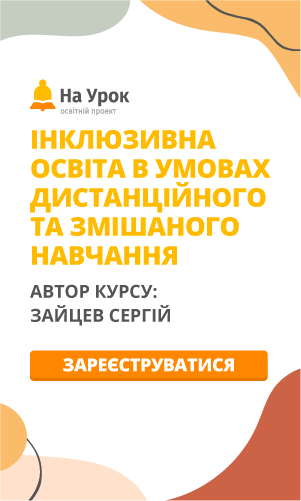
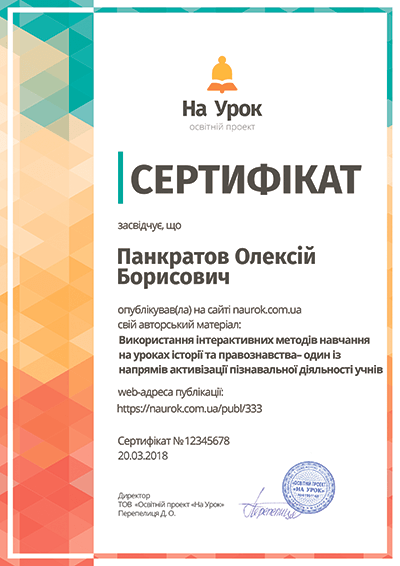
про публікацію авторської розробки
Додати розробку
